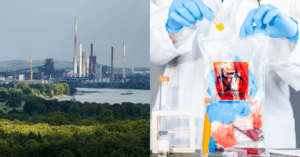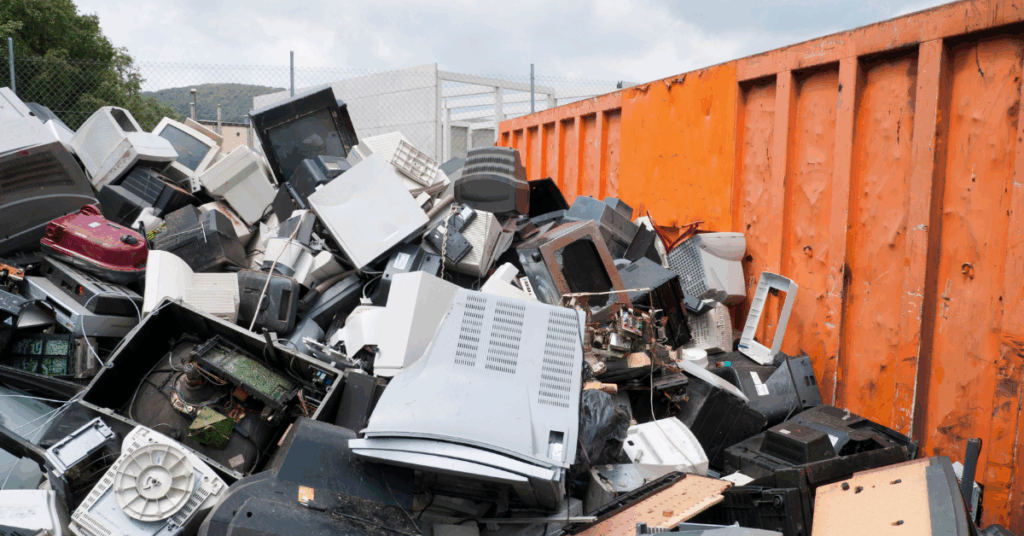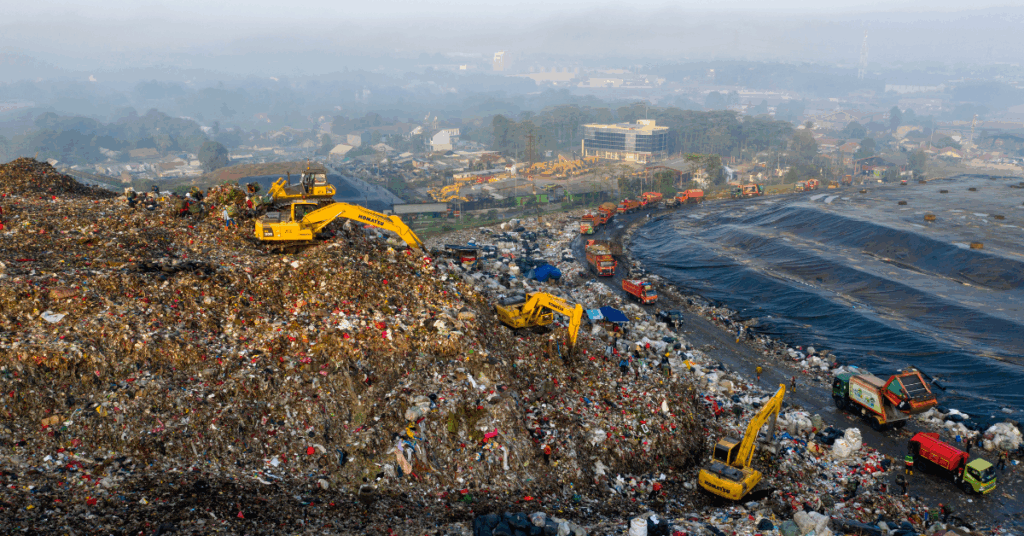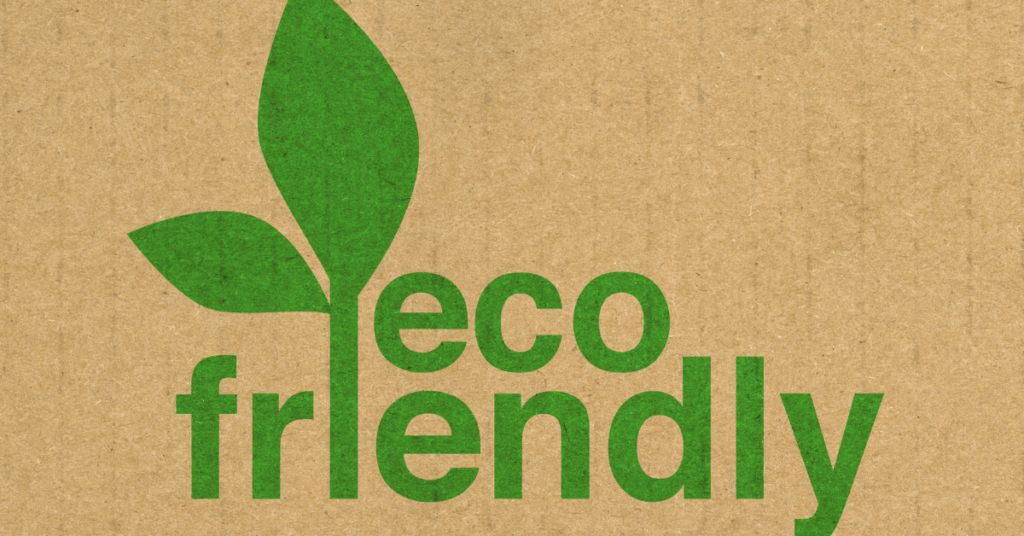Industrial growth is the backbone of our economy. But with every product we make, something else is created too: waste.
From chemical runoff to biomedical scraps, industries across the world are producing mountains of waste that quietly poison the environment, disrupt climate balance, and harm public health. The question is no longer if we should act, but how fast we can.
At ScrapEco, we believe understanding the problem is the first step to solving it. So, let’s unpack the seven major types of industrial waste, their effects, and what we can do differently.

1. Solid Waste: The Everyday Giant
Think of packaging scraps, metal residues, construction debris, and plastic leftovers. They look harmless, but together they form mountains that choke landfills and leach toxins into the soil.
In India alone, over 62 million tonnes of solid waste is generated each year, much of it from industries. When dumped carelessly, it releases methane: a gas far more harmful than CO₂ in heating the planet. Sustainable practices like recycling and composting aren’t just good habits; they’re essential climate actions.
2. Chemical Waste: The Invisible Poison
Chemical waste is tricky, it doesn’t always look dangerous, but it’s lethal. Found in paints, fertilizers, and pharmaceutical industries, it includes acids, solvents, and heavy metals that can contaminate rivers and groundwater.
The result? Communities facing chronic illnesses, degraded farmland, and toxic ecosystems. The Bhopal Gas Tragedy remains a painful reminder of how devastating chemical mishandling can be.
Effective chemical management isn’t just regulation, it’s a moral responsibility toward the people and places around every factory.
3. Liquid Waste: Pollution That Flows
Many industries discharge wastewater full of dyes, detergents, and oils straight into water bodies. The textile and tannery sectors are among the biggest culprits.
Look at Vapi, Gujarat, once an industrial pride, now battling groundwater pollution. Liquid waste doesn’t just kill aquatic life, it destroys livelihoods and contaminates drinking water for thousands.
Industries need to invest in Effluent Treatment Plants (ETPs) and reuse treated water wherever possible. Clean discharge isn’t optional; it’s basic accountability.

4. Gaseous Waste: The Air We Share
Industrial chimneys release gases like carbon dioxide, sulfur dioxide, and nitrogen oxides, which contribute to air pollution and global warming.
The smog over Delhi or the haze near Mumbai’s industrial zones tells the story. These emissions cause respiratory diseases, heart problems, and rising global temperatures.
By adopting air filtration systems, switching to cleaner fuels, and monitoring emissions consistently, industries can cut their carbon footprint while improving public health.
5. Toxic & Hazardous Waste: The Silent Killer
Pesticides, solvents, and radioactive residues fall under this category. They’re the kind of waste that doesn’t just vanish; it lingers, contaminating food chains for decades.
When dumped improperly, hazardous waste seeps into soil and groundwater, eventually reaching the crops and animals we depend on. This isn’t just an industrial issue, it’s a food security threat.
The way forward? Strict segregation, safe containment, and long-term disposal systems built to protect and not pollute.
6. Biomedical Waste: The Hidden Crisis
This is one of the most underestimated yet dangerous forms of industrial waste. Beyond hospitals, biomedical waste also comes from pharmaceutical plants, diagnostic labs, and research facilities.
Used syringes, expired medicines, and infected materials can spread diseases like HIV, hepatitis, and tuberculosis. During COVID-19, India generated over 180 tonnes of biomedical waste per day—and much of it wasn’t treated properly.
Improper disposal also emits harmful gases like dioxins and furans, directly contributing to climate change.
Every industry handling medical or laboratory material must follow Biomedical Waste Management Rules, ensuring safety for both humans and the environment.
7. Electronic Waste: The Modern Monster
With rapid tech upgrades, e-waste has exploded. Old machinery, batteries, and circuit boards contain toxic elements like lead and mercury. When these are dismantled or burned unsafely, they release harmful fumes and pollute soil and water.
What’s worse, informal recyclers often handle e-waste without protective gear, exposing themselves to long-term health damage.
The smarter solution? Responsible recycling and partnerships with certified e-waste handlers who can extract valuable materials safely.
So, What’s the Way Forward?
It’s easy to blame the system, but real change begins with how each company operates. Industrial waste management isn’t just about disposal, it’s about designing production processes that generate less waste to begin with.
At ScrapEco, we work with industries to build sustainable waste management frameworks from segregation and aiding them to recycle and recover. Because we’ve seen firsthand that a cleaner production line leads to a cleaner planet.
Here’s what every industry can start doing today:
- Segregate at source: Classify waste into recyclable, hazardous, and biodegradable categories.
- Treat before you toss: Use ETPs, incinerators, and composters responsibly.
- Monitor regularly: Keep track of emissions and waste output transparently.
- Collaborate: Partner with certified recyclers and disposal experts.
- Educate: Train workers and management teams on safe waste handling practices.
The Bottom Line
Industrial waste isn’t a by-product, it’s a by-choice outcome of how we manufacture, consume, and dispose. The world doesn’t need industries to stop producing; it needs them to start producing responsibly.
Every step toward cleaner practices; whether reducing chemical discharge or handling biomedical waste safely, adds up to something bigger: a planet that can breathe again.
Let’s not wait for nature to remind us of the cost of neglect. The future belongs to those who build, create, and grow: without leaving a trail of waste behind.


